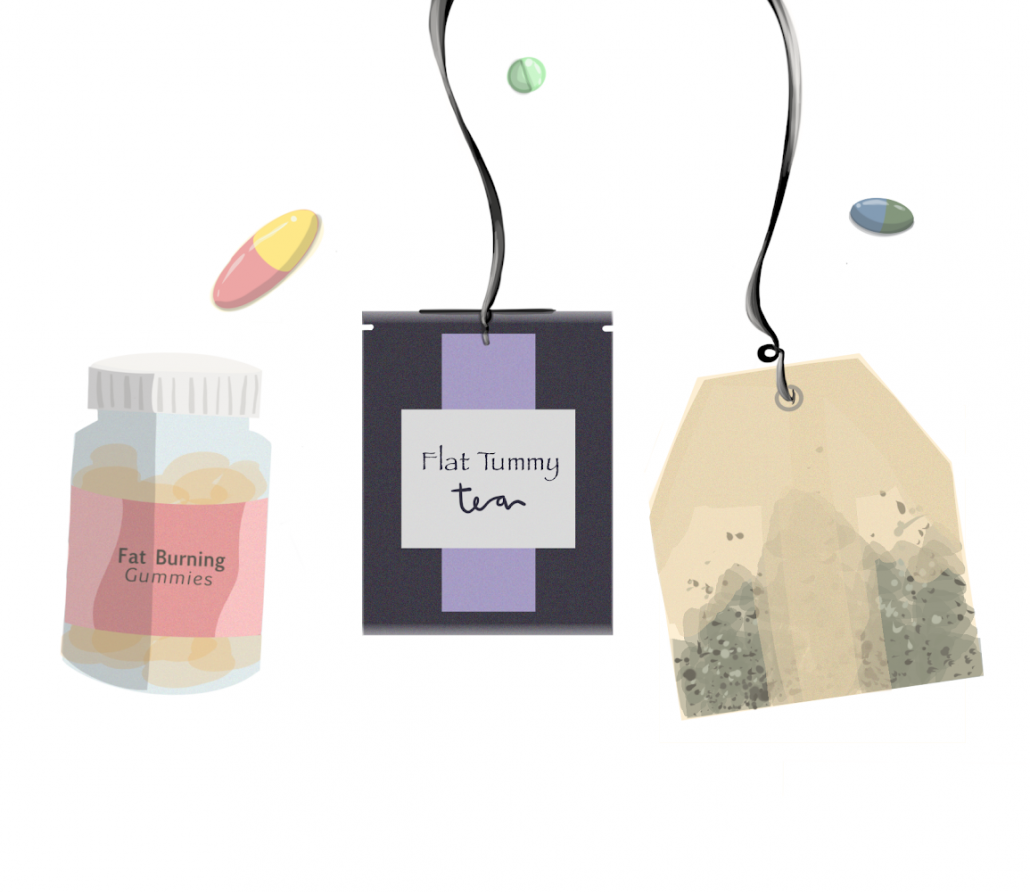90s Kid Unleashed: Instagram aestheticizes harmful diet culture

On Instagram, the camera eats first — but should we really be giving an app so much control over our dietary choices?
Diet fads are timeless. The ’80s had SlimFast, the ’90s had Atkins and the 2000s regrettably popularized juice cleanses, but Instagram has elevated diet culture to a whole new level, disguising harmful habits in pretty packaging.
A 2016 study by the University of Pittsburgh School of Medicine found that participants who spent the most time on social media were 2.2 times more likely to report issues with body image and eating, and Instagram is particularly nefarious. A systematic review also from 2016 in the journal Body Image found photo-based activities especially trigger negative thoughts about one’s body.
Author and registered dietitian Christy Harrison defines diet culture as a system of beliefs that equates being thin with health and moral virtue, promotes weight loss to achieve status, demonizes certain ways of eating and oppresses people who do not fit within this false paradigm of health.
Diet culture is an aesthetic currency on Instagram. Even content that does not specifically involve food, health or fitness still often upholds the tenets of diet culture. Filters, angles, captions and comments all merge together to remind users of a narrow and falsely entangled conception of beauty and health.
It’s easy to criticize multimillionaire Kim Kardashian West when a $200,000 check can buy a post from her to sell her young fans ineffective detox tea. The trifecta of Kardashian West’s seemingly needless pursuit of further wealth, the useless product and the unrealistic emphasis on a flat stomach come together to form the perfect loathsome narrative, but examples of diet culture root themselves far deeper into our timelines.
Recent diet trends such as Paleo, Whole30 and clean eating have moved away from explicit goals of weight loss to instead focus on vague values of wellness. Of course, when our cultural ideal of wellness equals thinness, such rebranding is meaningless and certainly still harmful.
Body positivity trends and greater cultural awareness regarding the dangers of media representations have made explicit weight shaming more taboo. Target’s advertisements now feature women of multiple sizes, and it’s hard to imagine a show like NBC’s 2004-16 series “The Biggest Loser” being greenlit by network executives in 2020. However, by transforming external concerns about weight and physical appearance into shallow concerns over health and wellness, we’ve further internalized diet culture’s toxic lessons.
Users might follow an Instagram food influencer like Ella Mills in the hope of integrating some of her vegan recipes into their weekly meal rotation. I’m sure that Mills’ 1.7 million followers and indeed Mills herself have the best of objectives, but even well-intentioned food content can promote diet culture’s harmful ideas by transforming wellness into an aesthetic sensibility.
Food-centric influencers are never just about the recipes that they post. More often than not, there is a certain well-lit, pastel aesthetic that sells these influencers as aspirational figures. What bloggers like Mills sell — whether they are aware or not — is a lifestyle.
Suddenly, food becomes so much more. With the right recipe and the right lighting, maybe we too can have a happy baby and tiled kitchen. By disguising Mills’ vegan diet behind this wholesome facade, Instagram depicts diet culture as a false sense of security that could conceal signs of disordered eating.
Disordered eating is an umbrella term that covers familiar eating disorders such as anorexia and bulimia as well as the 5-20% of people who struggle without meeting the full criteria for an eating disorder. While people who suffer from disordered eating may not meet all the clinical criteria, they nevertheless experience significant stress that diminishes their health and quality of life.
Physically, disordered eating can cause issues such as weight fluctuations, fatigue, menstrual irregularity and cavities. Emotionally, people become preoccupied with weight, food, diet and body image. They might begin restricting whole categories of food, obsessively counting their calories or performing specific food rituals.
Followers of influencers like Mills might begin to feel intense guilt when they don’t have the time or resources to fulfill her wholesome aesthetic. They might begin to identify certain foods as good because of how influencers represent them as “clean” or “whole” and subsequently regard other foods as bad, creating a punishing black and white paradigm of nutrition.
When it comes to disordered eating, early intervention is associated with the best outcomes. After disordered eating becomes a daily habit, it becomes harder to address, and patients may be unaware of the problems it causes. By selling disordered eating as an aspirational lifestyle, Instagram might prevent such important early intervention and further entrench these harmful and misguided health values.
It’s impossible to avoid diet culture. What’s necessary is awareness. The next time you log onto Instagram, pay attention to how food is portrayed within your social media sphere and how that makes you feel. Watch for signs of disordered eating in friends, family and yourself.
Our current diet trends will go out of style one day, but self-love and compassion are timeless. If the camera must eat first, then make sure you’re also feeding your soul.
Ellen Murray is a senior writing about being a millennial. Her column, “’90s Kid Unleashed,” runs every other Monday.

